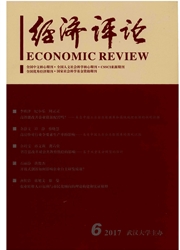

 中文摘要:
中文摘要:
全面认识中国区域发展的空间网络结构特征,对于中国新时期继续深入实施区域发展总体战略具有重大现实意义。本文基于2000-2013年中国省际地区发展与民生指数,运用社会网络分析方法揭示了中国区域发展的空间网络结构特征及其影响因素。研究发现,中国区域发展的空间关联呈现网络结构形态,省域之间存在普遍的溢出效应,不存在孤立发展的地区。中国区域发展的空间网络结构具有较明显的“等级”属性,其中,东部省份处于主导地位,中部省份扮演“桥梁”与“中介”角色,西部省份在网络中处于相对弱势地位。经济发展、民生改善、社会发展、生态建设、科技创新的区域协同与区域发展的空间网络结构呈显著相关,而民生状况的协同改善对空间网络结构影响最大。
 英文摘要:
英文摘要:
For further implementing China' s regional development strategy, it has important practical significance to comprehensively reveal the spatial network structure characteristics of China' s regional development. Based on the Development and Life Index (DLI) during 2000-2013 and the method of Social Network Analysis, this paper explores the characteristics of spatial network structure of China' s regional development and its influential factors based on the QAP process. The results show that: (1) Spatial correlation of China' s regional development constitutes a complex network structure, spillovers generally exist between provinces, and there is no isolated point in the network; (2)The spatial network of China' s regional development has obvious gradient feature. Eastern provinces are indominant position, and central region plays an intermediary role, while western provinces are on vulnerable statue ; (3) Economic development, people' s livelihood improvement, social development, ecological construction and technological innovation have strong correlation with spatial network of China' s Regional Development.
 同期刊论文项目
同期刊论文项目
 同项目期刊论文
同项目期刊论文
 期刊信息
期刊信息
